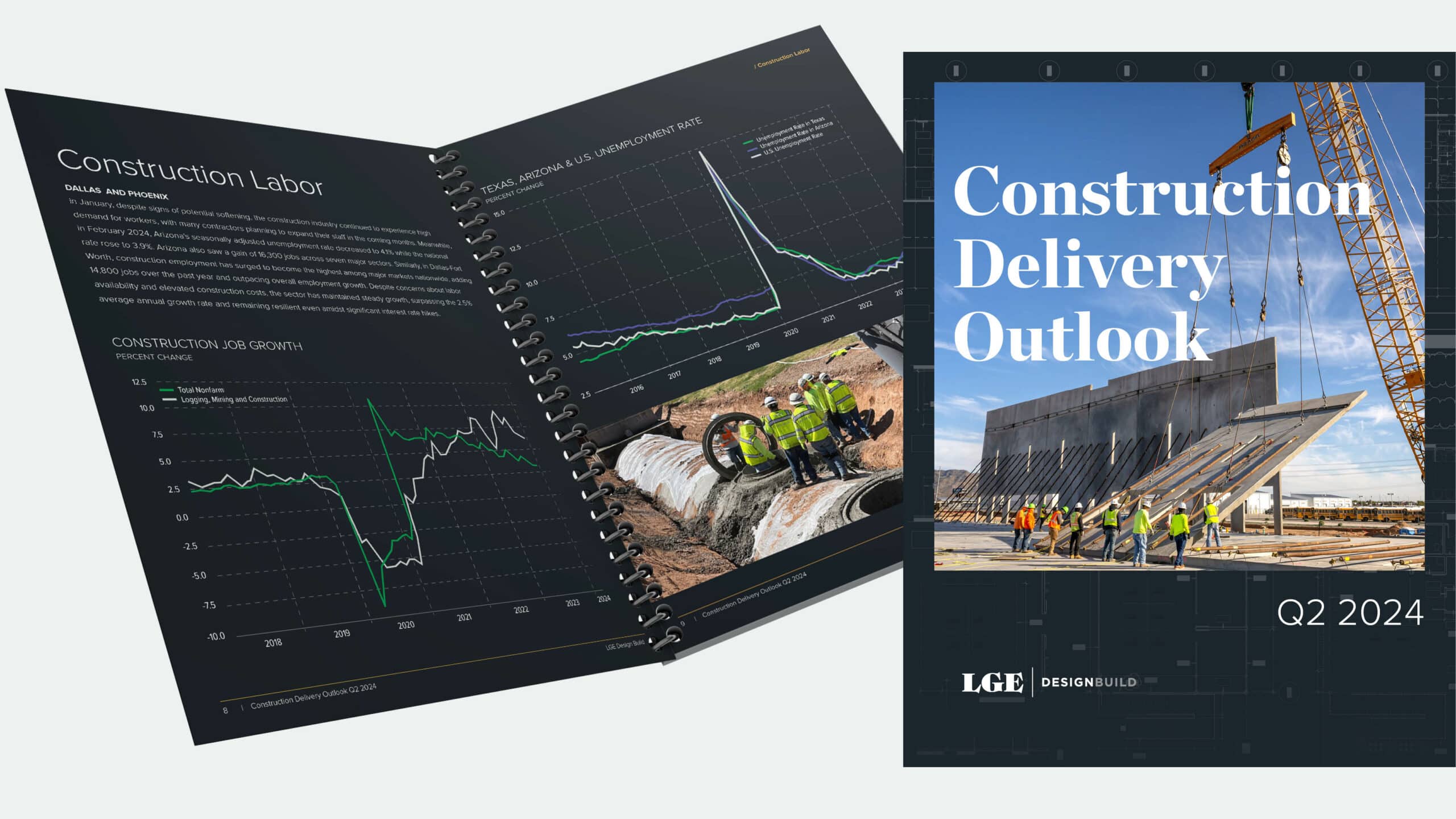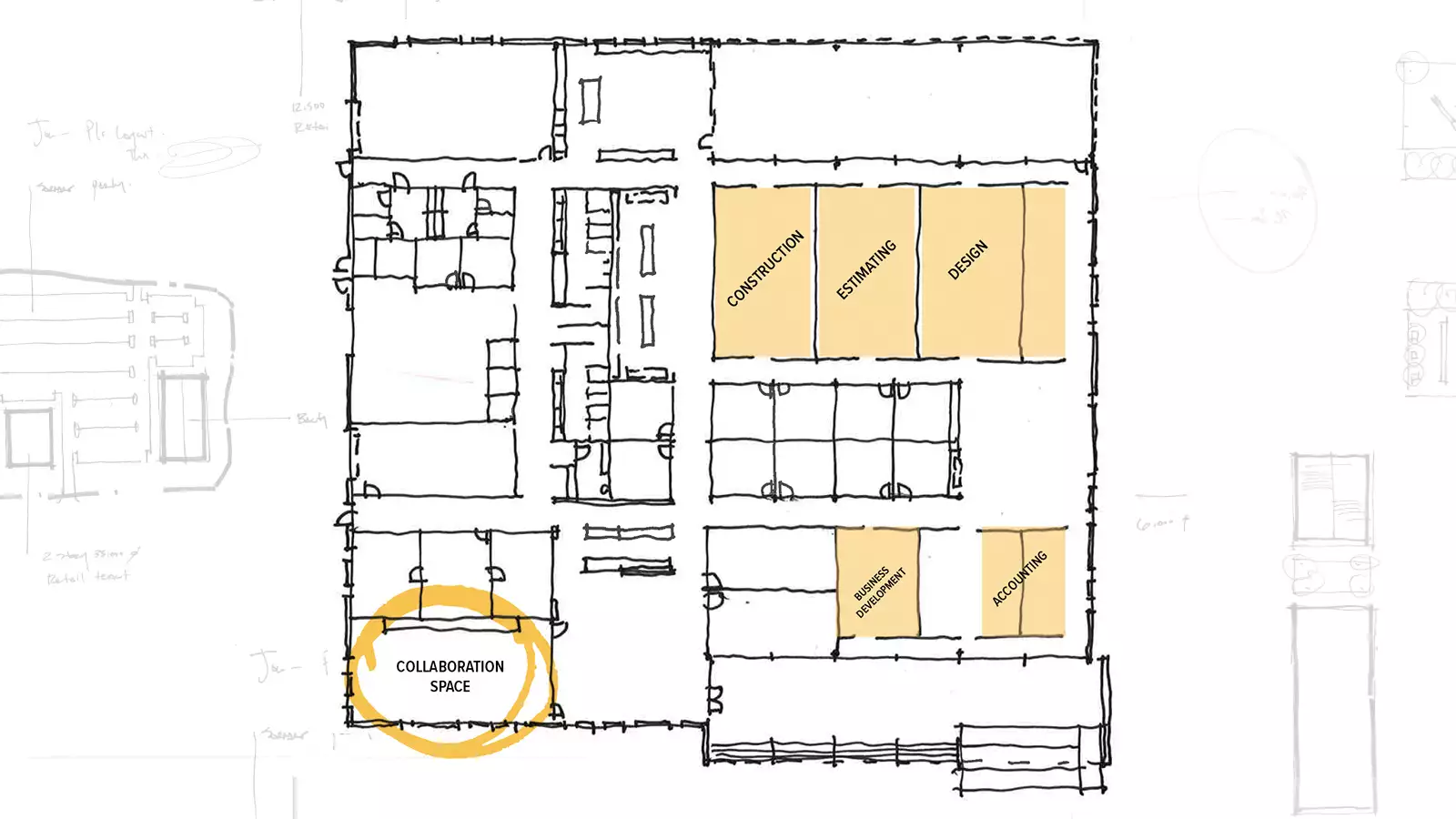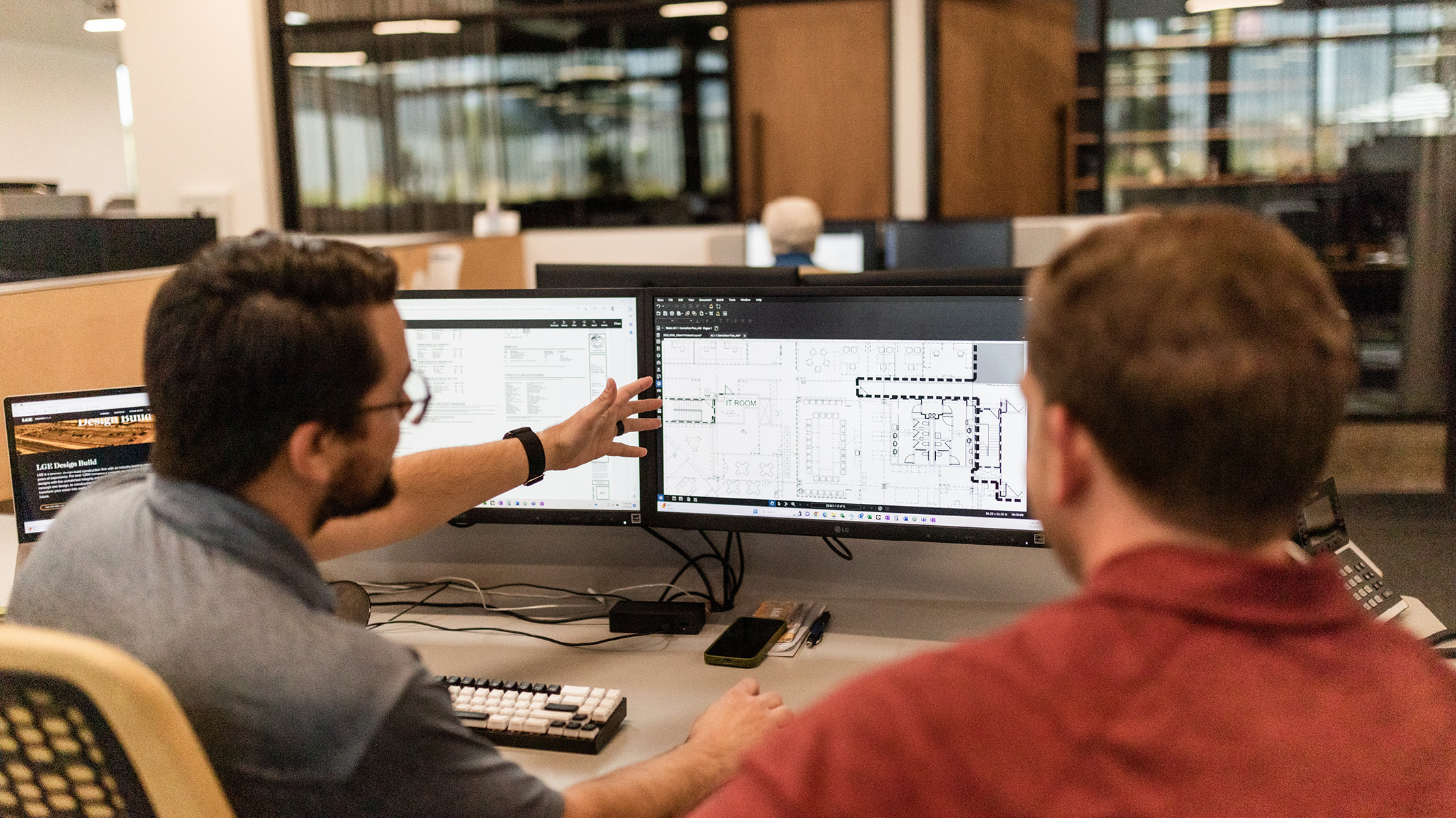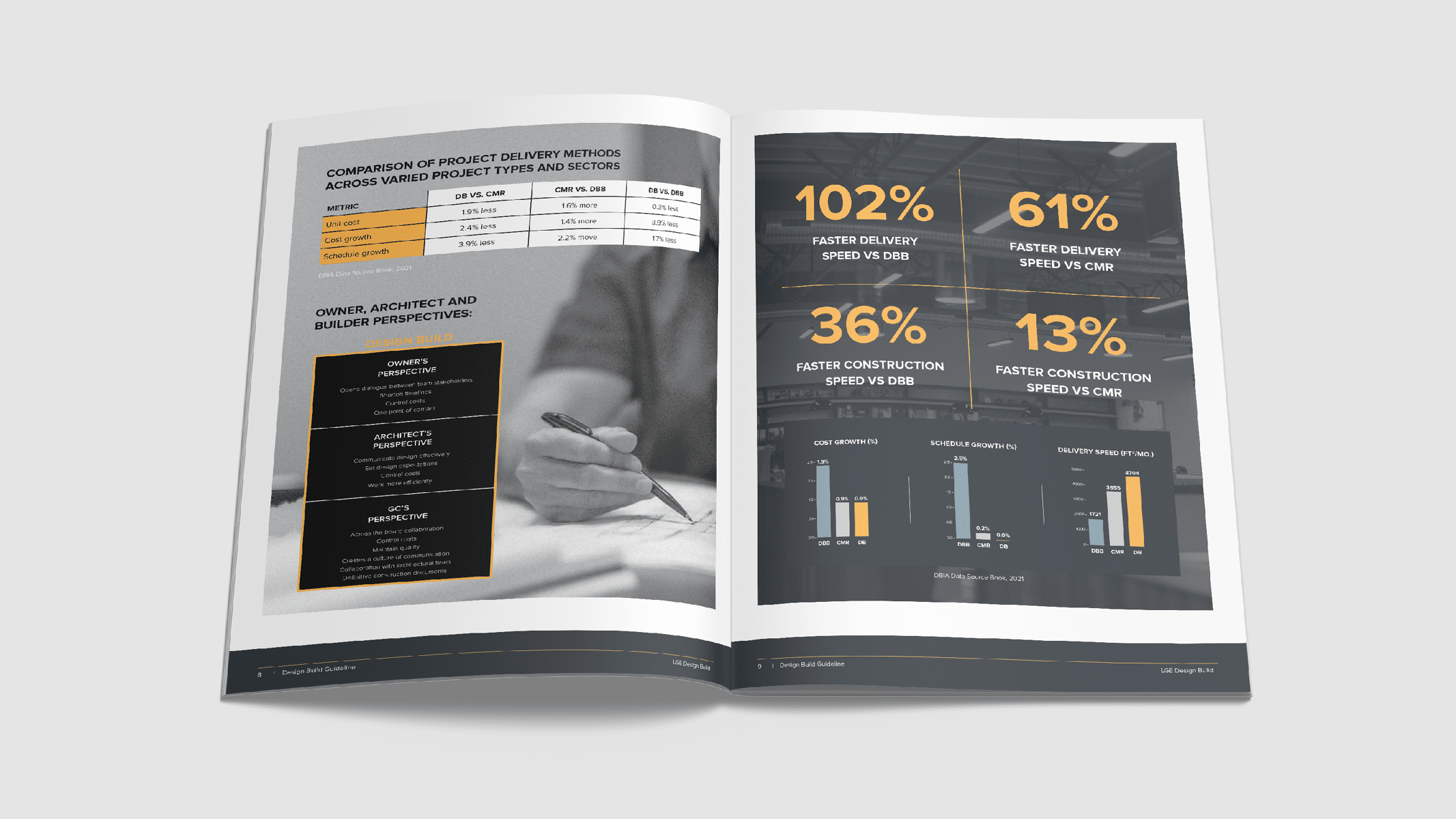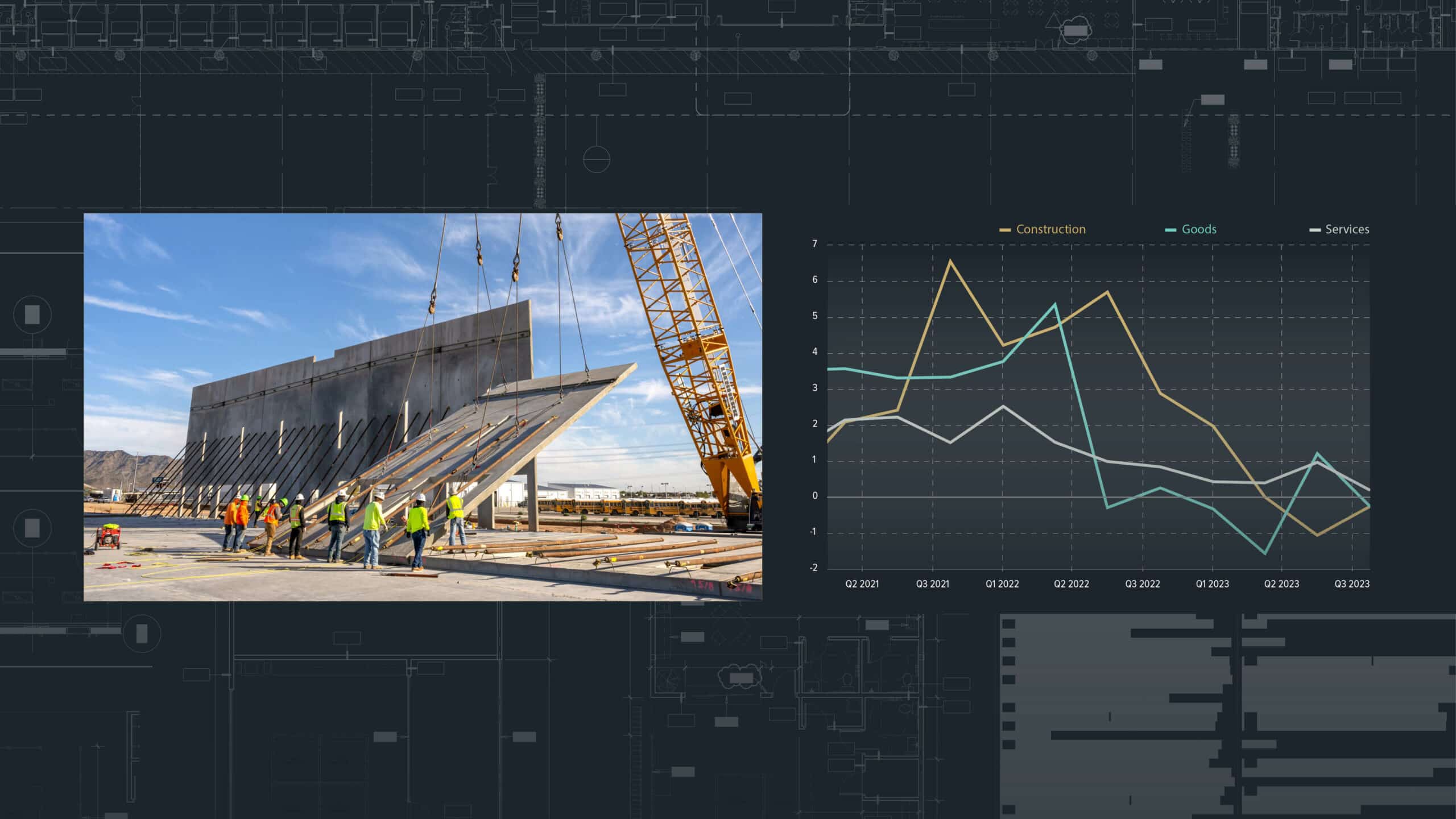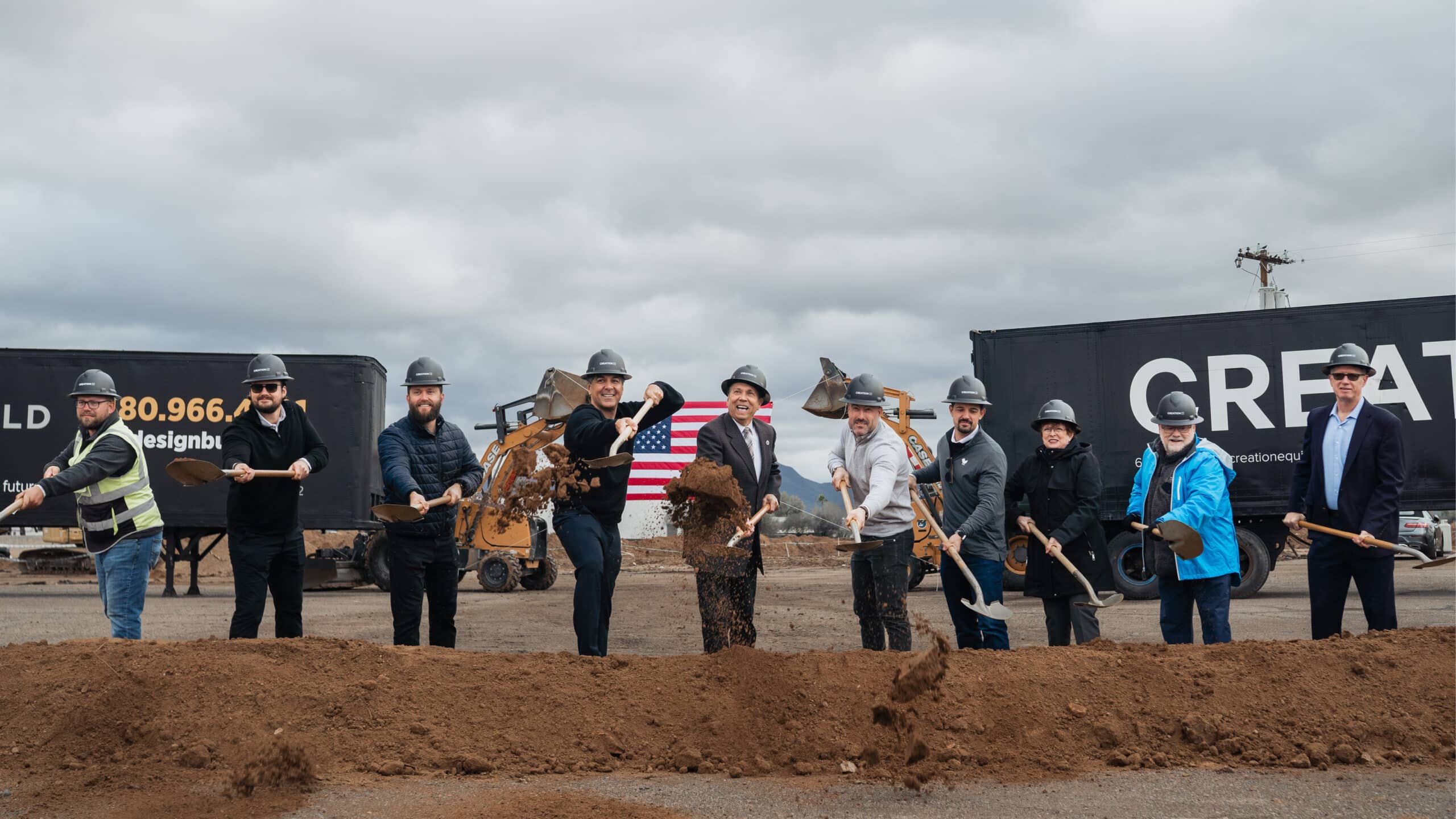
Tenant Improvement Project Basics: Enhancing Spaces for Business Success
A tenant improvement construction project, commonly referred to as “TI” or “leasehold improvement,” involves making modifications or upgrades to a commercial or retail space to better suit the specific needs and preferences of a tenant. This type of project occurs when a tenant leases a space within a larger building or complex and wants to customize it to align with their business requirements, brand identity, and operational functionality.
Tenant improvement projects can range in scope and complexity, but they typically involve various construction and design activities. In this article we walk you through an LGE Design Build restaurant TI from start to finish and highlight areas common in all tenant improvement projects.
- Space Planning: The tenant works with architects or designers to plan the layout and flow of the space, considering factors like workspaces, customer areas, storage, and accessibility.
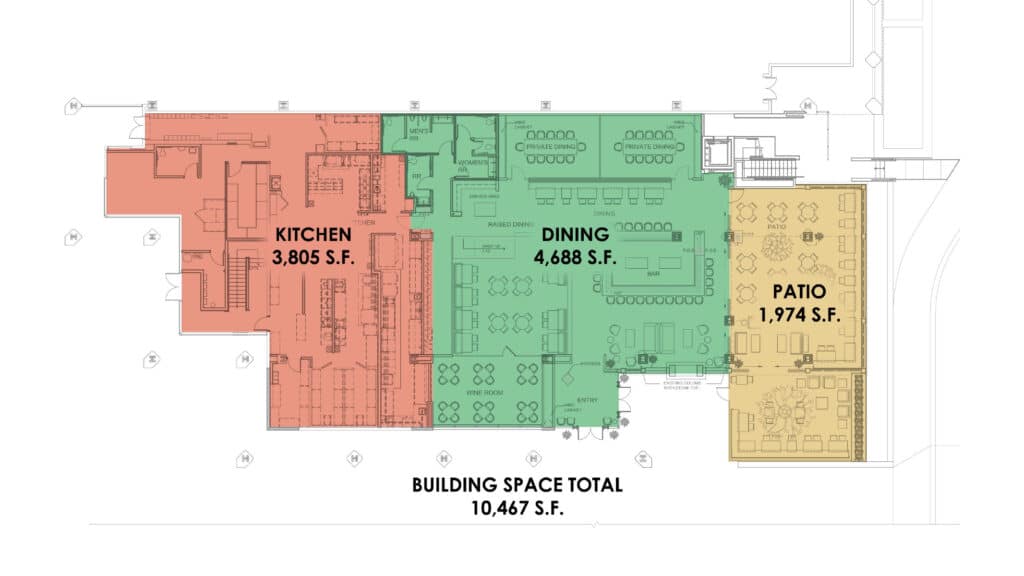
- Interior Design: This involves selecting materials, finishes, colors, and other design elements that reflect the tenant’s branding and create a visually appealing environment.
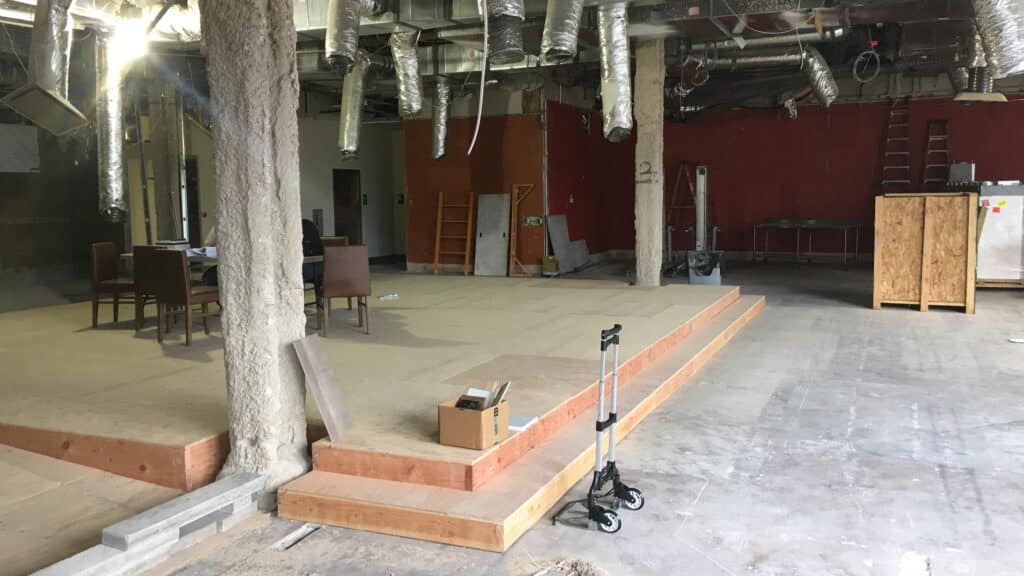
- Demolition and Build-Out: Depending on the extent of the improvements, some areas may need to be demolished, walls may need to be built or moved, and new partitions may be added to create the desired layout.

- Electrical and Lighting: Wiring, lighting fixtures, and electrical outlets are installed or updated to meet the tenant’s technological and lighting needs.
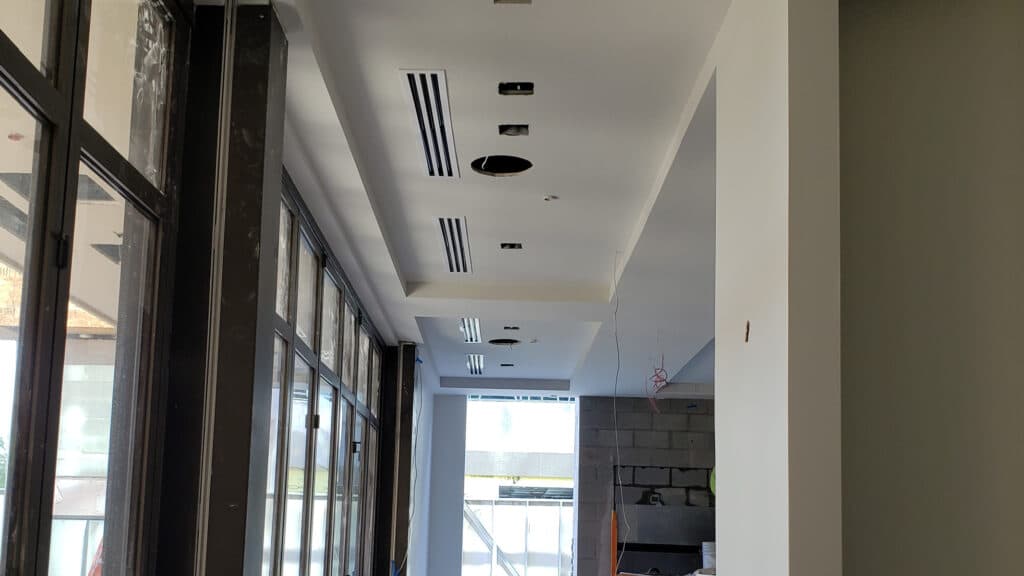
- Plumbing and HVAC: If necessary, plumbing systems, sinks, restrooms, and heating, ventilation, and air conditioning (HVAC) systems are installed or upgraded.
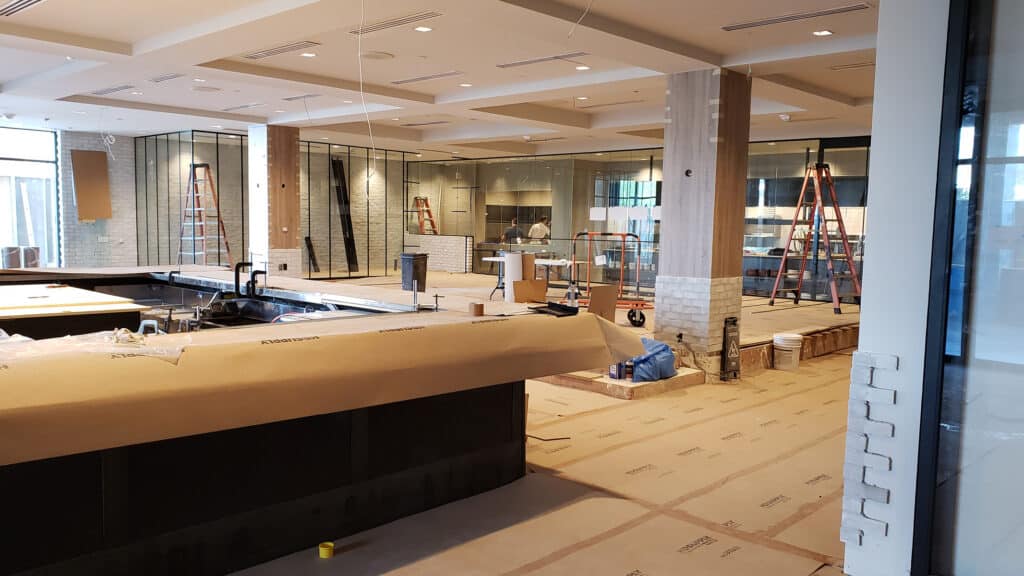
- Flooring: New flooring materials such as carpet, hardwood, tile, or specialized flooring are installed to enhance aesthetics and functionality.
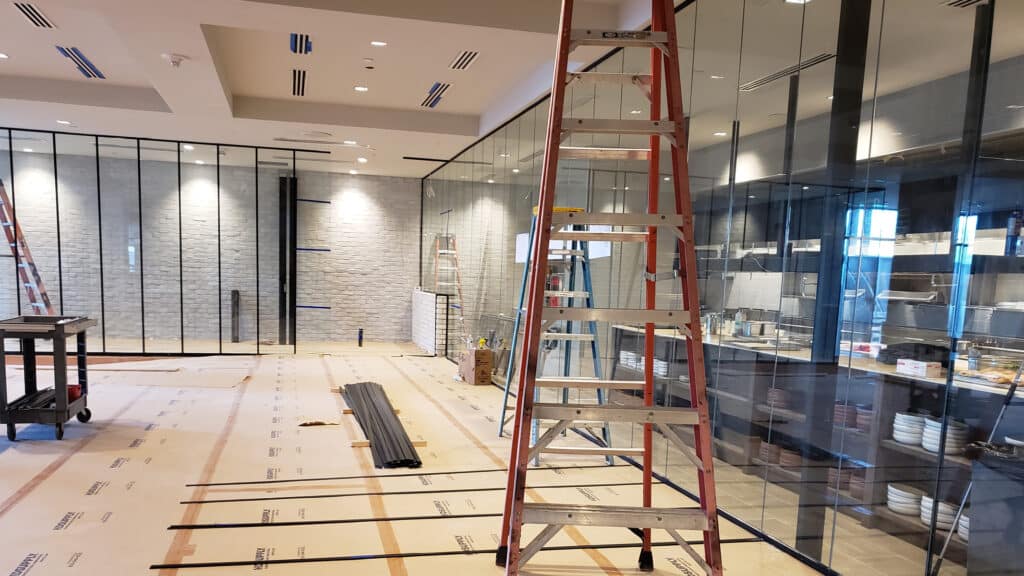
- Cabinetry and Fixtures: Custom cabinetry, shelves, counters, and other fixtures are installed to optimize storage and display areas.
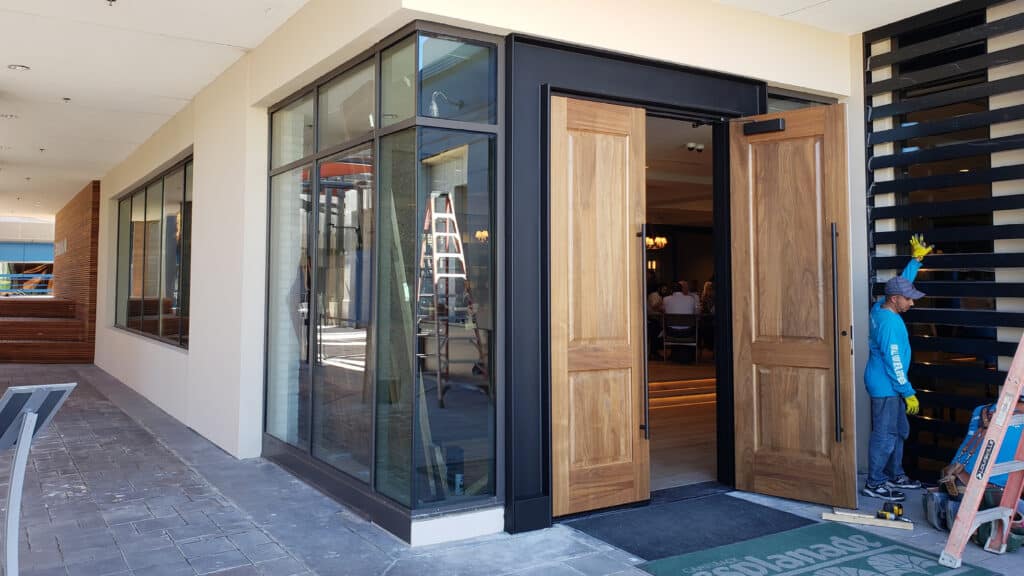
- Security and Access Control: Security systems, access control measures, and surveillance equipment may be added to ensure safety and compliance with regulations.
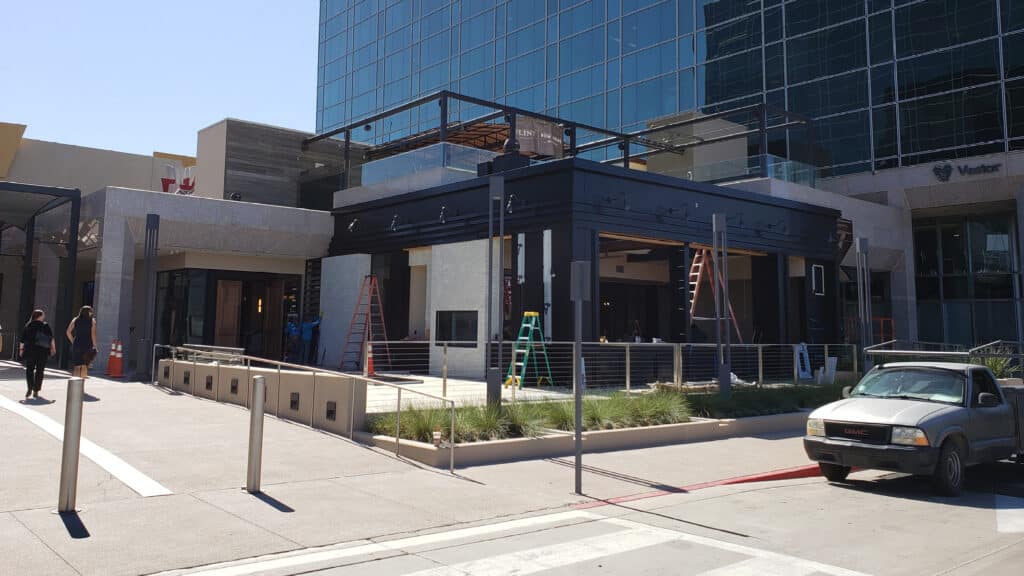
- Brand Integration: The tenant’s branding elements, such as logos, signage, and color schemes, are incorporated into the design to create a cohesive and recognizable atmosphere.
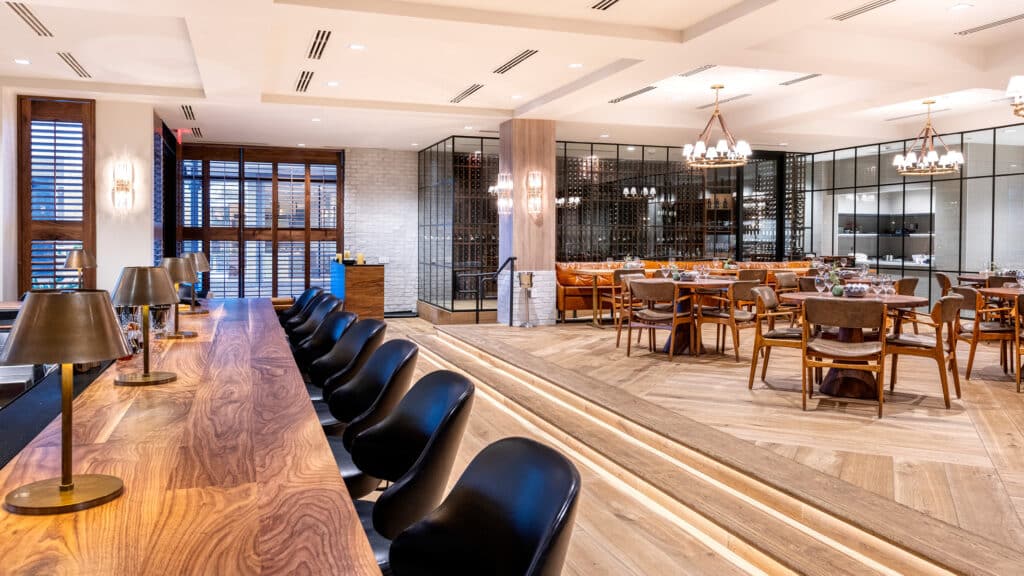
- Furniture Installation: Furniture is selected and placed to accommodate employees, customers, and other occupants according to the space plan.
Throughout the project, various stakeholders collaborate, including the tenant, landlord, architects, contractors, interior designers, and possibly consultants specialized in areas like code compliance, accessibility, and sustainability.
Tenant improvement projects can vary in duration and cost based on the size of the space, the complexity of the modifications, and the specific needs of the tenant. The goal is to create a functional and appealing workspace that aligns with the tenant’s business operations while adhering to building codes and lease agreements.
10 Frequently Asked Tenant Improvement Questions
- What is a tenant improvement (TI) construction project, and why is it important for commercial tenants?
A tenant improvement (TI) construction project involves modifying or upgrading a commercial or retail space to align with a tenant’s specific needs, branding, and operational requirements. It’s crucial for commercial tenants as it allows them to customize their leased space to enhance functionality, aesthetics, and brand identity, ultimately improving their business operations and customer experience. - What are the typical steps involved in a tenant improvement project, and who are the key stakeholders?
Typical steps include space planning, interior design, demolition and build-out, electrical and lighting installation, plumbing and HVAC updates, flooring installation, cabinetry and fixtures installation, security integration, brand incorporation, and furniture installation. Key stakeholders may include the tenant, landlord, architects, contractors, interior designers, and consultants specializing in areas like code compliance and sustainability. - How do tenants initiate and manage a tenant improvement project with a design-build approach?
Tenants can initiate a tenant improvement project by discussing their requirements with the landlord and obtaining necessary approvals. With a design-build approach, tenants work closely with a single entity, such as LGE Design Build, which manages the entire project from design to construction, streamlining communication and ensuring seamless coordination. - What are some common challenges faced during tenant improvement projects, and how can they be mitigated?
Common challenges may include budget constraints, timeline delays, design changes, and coordination issues among stakeholders. These challenges can be mitigated through thorough planning, clear communication, regular progress monitoring, and proactive problem-solving. - How do tenant improvement projects impact lease agreements, and what should tenants consider before embarking on such projects?
Tenant improvement projects may impact lease agreements in terms of costs, responsibilities, and lease terms. Before embarking on such projects, tenants should carefully review lease agreements, negotiate terms related to improvements, and consider factors such as budget, timeframe, and landlord approval processes. - What are some trends in tenant improvement design and construction, and how can tenants stay updated with industry developments?
Trends may include sustainable design, flexible workspaces, technology integration, and wellness features. Tenants can stay updated with industry developments by attending industry events, networking with professionals, and seeking guidance from design-build firms like LGE Design Build. - What factors influence the duration and cost of a tenant improvement project, and how can tenants optimize these aspects?
Factors influencing duration and cost include project scope, complexity, materials, labor costs, and unforeseen challenges. Tenants can optimize these aspects by defining clear project objectives, setting realistic budgets and timelines, and collaborating closely with experienced professionals. - What are some best practices for maximizing the functionality and aesthetics of a commercial space through tenant improvements?
Best practices include conducting thorough needs assessments, prioritizing functionality, selecting durable and visually appealing materials, maximizing natural light, optimizing space utilization, and incorporating branding elements cohesively. - How do tenants ensure compliance with building codes, regulations, and lease agreements during a tenant improvement project?
Tenants ensure compliance by working with knowledgeable professionals who understand local building codes, regulations, and lease terms. Regular inspections, permits, and documentation also help ensure adherence to legal and contractual requirements. - What are the benefits of partnering with a design-build firm for tenant improvement projects, and how do tenants choose the right contractor?
Benefits of partnering with a design-build firm include streamlined project management, cost and time efficiencies, single-point accountability, and enhanced communication. Tenants can choose the right contractor by researching firms’ experience, expertise, reputation, and portfolio, and by conducting thorough interviews and assessments.
